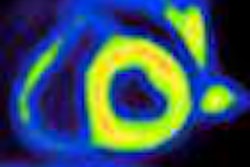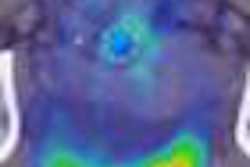Dear Molecular Imaging Insider,
This issue of the Insider begins with coverage of the second Sino-American Conference, held recently by the Society of Nuclear Medicine and Molecular Imaging (SNMMI) and the Chinese Society of Nuclear Medicine (CSNM).
Our Insider Exclusive provides an interview with Dr. Gang Huang, PhD, CSNM's president, who attended the event with more than a dozen members and several young investigators as part of SNMMI's Mid-Winter Meeting in New Orleans.
Dr. Huang discusses the challenges facing nuclear medicine and molecular imaging in China, including training technologists, expanding PET/CT service to more patients, and addressing the issue of PET reimbursement. Read more by clicking here, in an article that is available to you before other AuntMinnie.com members.
In other features, Swedish researchers are expanding the use of PET imaging with carbon-11-labeled Pittsburgh Compound B (PiB) to cardiac amyloidosis, confirming the biomarker's ability to detect amyloid plaque deposits in the heart in a first-of-its-kind study. The researchers from Uppsala University found a "significant" increase in PiB as the biomarker bound to amyloid plaque deposits in the heart. PiB-PET also revealed a significant reduction in myocardial blood flow.
The news was not as good for Eli Lilly and Avid Radiopharmaceuticals, which manufacture Amyvid (florbetapir F-18) for brain beta-amyloid PET imaging. A U.S. Centers for Medicare and Medicaid Services (CMS) advisory committee said more studies are needed to confirm the efficacy of the radiopharmaceutical. While Amyvid received clearance from the U.S. Food and Drug Administration in April 2012, it has not yet been approved by CMS for reimbursement.
International editor Eric Barnes reports on a study from the American Society of Clinical Oncology Gastrointestinal Cancers Symposium; Johns Hopkins researchers found that PET/CT results can predict which patients will respond to high-dose-rate endorectal brachytherapy for stage II and III rectal cancer. The findings could pave the way for easier treatments and better outcomes.
And, finally, PET myocardial perfusion imaging with flurpiridaz F-18 is "safe and superior" to SPECT myocardial perfusion imaging with technetium-99m for image quality, interpretation, coronary artery disease diagnosis, and patient tolerance of the tracer, according to a study from Cedars-Sinai Heart Institute. In the phase II multicenter trial, 99% of PET images with the myocardial perfusion tracer, which is being developed by Lantheus Medical Imaging, were rated as excellent or good, with a diagnostic certainty of 91%.
Be sure to stay in touch with the Molecular Imaging Digital Community on a daily basis, and AuntMinnie.com will be bringing you news and research from the European Congress of Radiology in Vienna, beginning March 6.




















